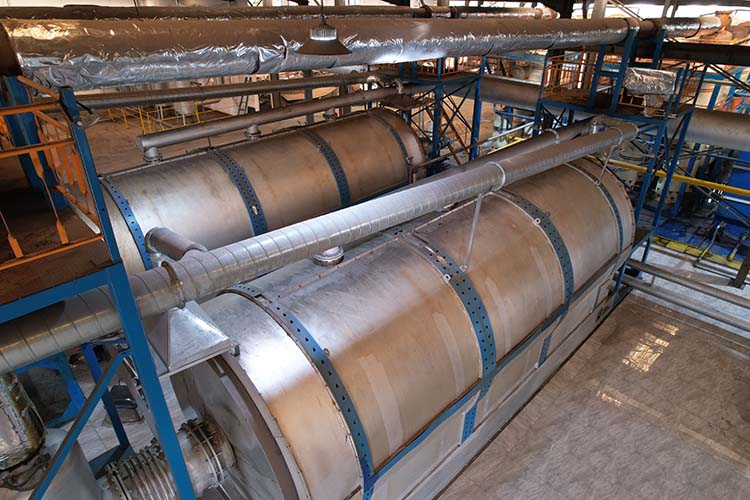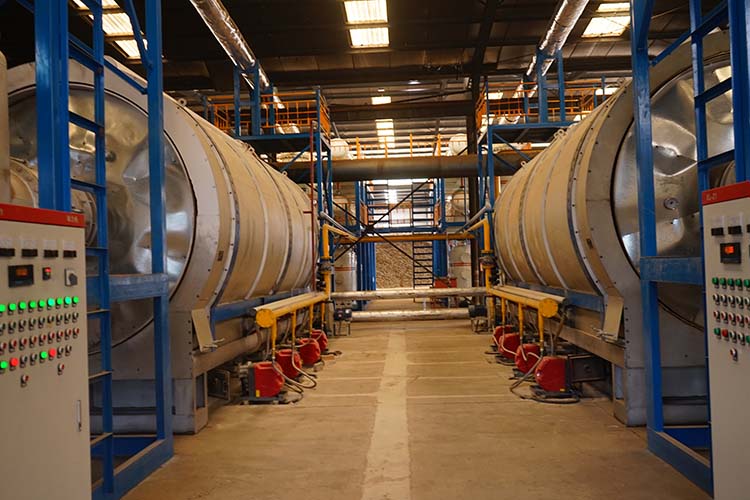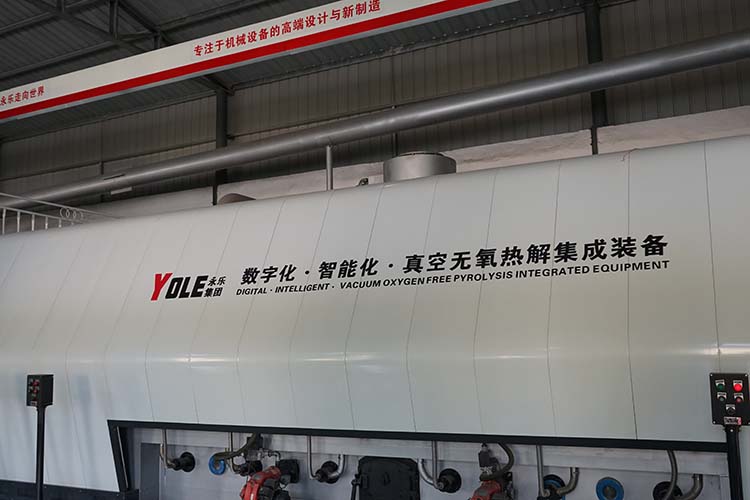The waste tire pyrolysis equipment offers an industrial solution for the resource recovery of rubber waste through a systematic technical approach. The entire production line is based on the principle of pyrolysis, which enables the decomposition and separation of materials in a closed environment, forming a complete process chain from raw material treatment to product recovery. The equipment operation encompasses several stages, including pre-treatment, pyrolytic conversion, product separation, and environmental treatment, transforming waste tires into recyclable industrial raw materials while reducing environmental load and creating resource value.

The production line adopts a modular design architecture, allowing efficient integration of each unit through standardized interfaces. The raw material pre-treatment system utilizes mechanical decomposition and sorting technologies to convert whole tires into a form suitable for pyrolysis. The drying unit employs indirect heating to remove moisture and volatile substances, creating stable conditions for subsequent reactions. The pyrolysis reactor conducts the main reaction in an oxygen-free environment with a temperature control system to ensure uniform heating of the materials, promoting effective cracking of rubber components into oil and gas products. The structural design balances thermal conductivity efficiency and sealing performance, thereby reducing energy loss.
The pyrolysis product treatment system consists of multi-stage condensation devices and gas purification units. The oil and gas mixture is separated into liquid fuel oil and combustible gas through gradient cooling, with the latter being purified and recirculated within the system, establishing a self-sufficient energy model. Solid residues are separated from carbon black and fiber materials through physical sorting technologies and are transformed into industrial raw materials after processing, achieving full recovery of tire components.

An environmental control system runs throughout the entire production process. The waste gas treatment unit employs multi-stage purification processes to ensure emissions meet standards, while the cooling water system uses recycling treatment techniques to reduce resource consumption. The production line employs a sealed design and dust collection devices to control the working environment, with no wastewater discharge during the process and all solid products being repurposed, complying with clean production requirements.
An intelligent control system ensures the stable operation of the equipment. The central control platform integrates parameter monitoring and automatic adjustment functionalities, optimizing process execution efficiency through preset programs. Emergency response mechanisms are triggered in abnormal conditions, with multiple safety protections on key processes, and the equipment maintenance module extends continuous operating periods. The data collection system supports process optimization, balancing operational safety and treatment efficiency.

By leveraging the synergistic effects of thermodynamic decomposition and mechanical sorting technologies, this processing equipment converts waste tires into rubber, metal, and chemical fiber materials, yielding dual benefits of resource regeneration and environmental protection. Its process design optimizes both treatment efficiency and environmental performance, while the internal energy recycling mechanism effectively reduces reliance on external energy sources. The modular structure adapts to various processing scale requirements. Driven by the concept of a circular economy, such equipment provides technological support for the sustainable development of the rubber industry, alleviating raw material supply pressures through resource regeneration pathways and offering practical references for technical applications in solid waste treatment.
Yongle Environmental Protection is mainly engaged in the research and development, production and sales of complete sets of technical equipment for organic solid waste disposal and comprehensive utilization. Production and manufacturing, domestic waste treatment equipment, tire pyrolysis equipment, medical waste disposal equipment, hazardous waste disposal equipment, and achieve efficient and comprehensive utilization of resources through independently developed low-temperature anaerobic pyrolysis equipment technology solutions.
Tags:Waste tire refining equipment resource process,waste tire refining equipment,YONGLE GROUP
 Latest news
Latest news


























